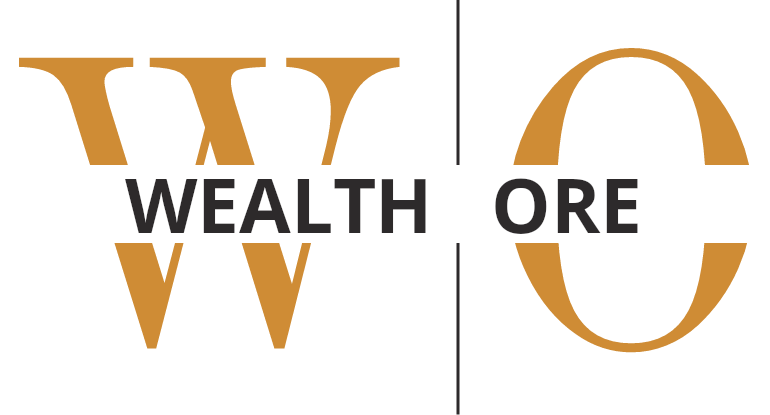Have you ever wondered which investment option is best for you: mutual funds or ETFs? With so many choices, it can be challenging to determine the right fit for your financial goals. This post will delve into the differences between mutual funds and exchange-traded funds (ETFs), how to choose the right ones for your portfolio, and the advantages and disadvantages of each, focusing on what an investors need to know.

Differences Between Mutual Funds and ETFs
Mutual Funds
Imagine you and your friends each have a little bit of money, and you all want to buy some cool stuff together, like toys, video games, and books. Instead of buying them on your own, you all put your money into a big jar. You then ask a really smart shopper (let’s call them the “fund manager”) to use the money in the jar to buy the best mix of toys, games, and books for everyone.
A mutual fund works like that big jar of money. Lots of people put their money together, and a fund manager uses that money to buy a mix of investments like stocks (pieces of companies) and bonds (loans to companies or governments). Everyone who put money in the jar owns a small piece of all the investments the fund manager buys.
- Structure: Mutual funds pool money from multiple investors to buy a diversified portfolio of stocks, bonds, or other securities. They are actively managed by professional fund managers who make investment decisions.
- Trading: Mutual funds are priced and traded once daily after the market closes. The price is based on the fund’s holdings’ net asset value (NAV).
- Fees: Typically, mutual funds have higher fees, including management fees and sometimes sales loads or redemption fees.
ETFs (Exchange-Traded Funds)
Now, let’s imagine you have a big basket that contains a variety of items, like toys, video games, and books. The basket is already filled with a mix of these items, and each item represents a small part of the whole basket. You can buy and sell this basket anytime during the day at different prices depending on how popular the items inside the basket are.
An ETF works like this basket. It’s a collection of different investments, like stocks or bonds, all bundled together. You can buy and sell shares of an ETF on the stock market throughout the day, just like you would with individual stocks. The price of ETF shares changes during the day as people trade them.
- Structure: ETFs are similar to mutual funds in that they pool money from investors to buy a diversified portfolio of assets. However, they are usually passively managed, tracking a specific index, sector, or commodity.
- Trading: ETFs are traded on stock exchanges throughout the day, just like individual stocks. Their prices fluctuate during the trading day based on market supply and demand.
- Fees: ETFs generally have lower fees than mutual funds. They may incur brokerage commissions when traded, but they often lack the sales loads associated with mutual funds.
How to Choose the Right Mutual Funds or ETFs for Your Portfolio
Selecting the right mutual funds or ETFs depends on your investment goals, risk tolerance, and investment horizon. Here are some steps to guide you:
1. Define Your Investment Goals
Are you saving for retirement, a home, or your child’s education? Your goals will influence the type of funds or ETFs you choose.
2. Assess Your Risk Tolerance
Consider how much risk you are willing to take. Higher risk can mean higher returns but also greater potential losses. Your risk tolerance will guide whether you opt for more aggressive growth funds or more conservative income funds.
3. Evaluate Performance and Fees
Look at the historical performance of the fund or ETF, but remember that past performance is not indicative of future results. Compare fees, as lower fees can significantly impact your returns over time.
4. Consider the Management Style
Decide whether you prefer active management (mutual funds) or passive management (ETFs). Active management can potentially outperform the market but comes with higher fees. Passive management typically has lower fees and follows the market.
5. Diversification
Ensure the fund or ETF provides adequate diversification. Investing in a broad range of assets can help spread risk.
6. Check the Fund’s Holdings
Review the underlying assets of the fund or ETF to ensure they align with your investment strategy and goals.
Examples of Mutual Funds and ETFs to Consider
Mutual Funds
- Allan Gray Balanced Fund: A popular mutual fund in Africa, managed by Allan Gray, focuses on providing long-term capital growth and income.
- Stanbic IBTC Nigerian Equity Fund: This fund invests primarily in Nigerian equities and aims to deliver long-term capital growth.
- Coronation Money Market Fund: A lower-risk mutual fund that invests in high-quality money market instruments, suitable for conservative investors.
ETFs
- Satrix 40 ETF: Tracks the performance of the top 40 companies listed on the Johannesburg Stock Exchange (JSE), offering diversified exposure to South African equities.
- NewGold ETF: Provides exposure to the gold bullion price by investing in gold bars, a good option for hedging against currency and market volatility.
- iShares MSCI Frontier 100 ETF: Offers exposure to frontier markets, including several African countries, providing a broader diversification across emerging economies.
Advantages and Disadvantages of Mutual Funds and ETFs
Mutual Funds
Advantages:
- Professional Management: Active management by professional fund managers.
- Diversification: Access to a diversified portfolio with a relatively small investment.
- Accessibility: Mutual funds make it easy for individual investors to participate in the financial markets without needing to pick individual stocks or bonds.
- Automatic Reinvestment: Dividends and capital gains can be automatically reinvested.
Disadvantages:
- Higher Fees: Management fees, sales loads, and other expenses.
- Less Transparency: Holdings are disclosed less frequently, typically quarterly.
- Minimum Investment Requirements: Some mutual funds require a minimum investment amount, which can be a barrier for small investors.
- Limited Trading Flexibility: Traded only once per day after the market closes.
ETFs
Advantages:
- Lower Fees: Generally have lower expense ratios compared to mutual funds.
- Trading Flexibility: Can be bought and sold throughout the trading day.
- Transparency: Holdings are disclosed daily.
- Tax Efficiency: ETFs are generally more tax-efficient than mutual funds because of their unique structure.
Disadvantages:
- Trading Costs: Brokerage commissions and bid-ask spreads can add to costs.
- Market Volatility: Since ETFs can be traded throughout the day, their prices can be more volatile.
- Potential for Overtrading: The ability to trade ETFs throughout the day might tempt some investors to trade excessively, leading to higher costs and potential losses.
Stay Informed
Keep up with market trends, economic news, and changes in the investment landscape. Staying informed helps you make timely decisions and seize opportunities, ensuring the continued effectiveness of your diversified investment portfolio. For more insights, check out our latest articles on WealthOre. Additionally, you can find reliable data and analysis on platforms like Morningstar and ETF.com.
Conclusion
Understanding mutual funds and ETFs is essential for building a diversified and balanced investment portfolio. While both investment vehicles offer unique benefits, they also come with distinct disadvantages. By defining your investment goals, assessing your risk tolerance, and carefully evaluating performance and fees, you can choose the right mutual funds or ETFs to help achieve your financial objectives. What has been your experience with mutual funds and ETFs, and how have they impacted your investment strategy? Share your thoughts in the comments below!






